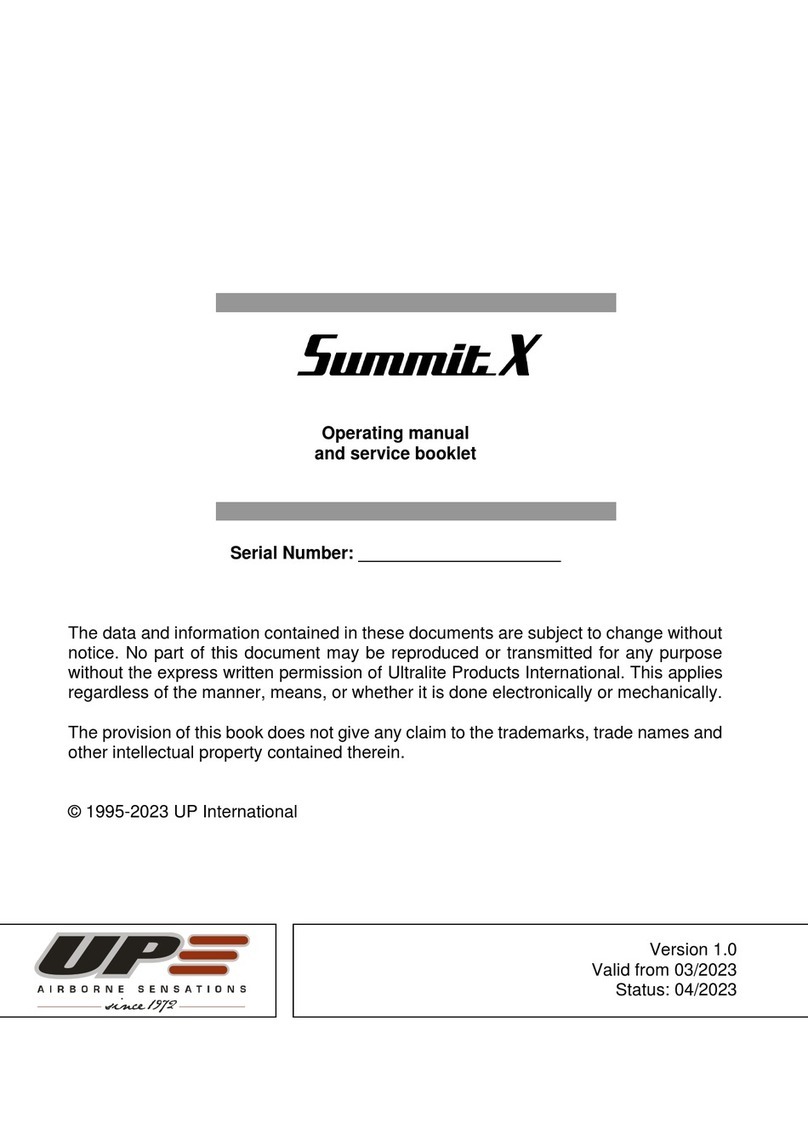
___________________________________________________________________________
Safety instructions
9
Paragliding is an extremely demanding
sport requiring the highest levels of
attention, judgment, maturity,
and self-discipline. Due to the
inherent risks in flying this or
any paraglider, no warranty of
any kind can be made against
accidents, injury, equipment failure,
and/or death. This rescue system is not
covered by product liability insurance. Do
not use it unless you are personally willing
to assume all risks inherent in the sport of
paragliding and all responsibility for any
property damage, injury, or death, which
may result from use of this paraglider
rescue system.
Please read this owner's manual
thoroughly before your first flight with the
UP Profile 2 so that you are fully
acquainted with your new rescue system.
This manual gives you information on the
entire specific and general characteristics
of the UP Profile 2. It is important to note
the following points:
•At the time of delivery the UP
Profile 2 conforms to German Hang
Gliding Association (DHV)
requirements (see certification
information later in this manual)
•Any changes being made outside the
permitted range of adjustment
invalidate any and all claims under
the warranty
•Using this rescue system is
exclusively at the risk of the user; the
manufacturer or distributor assumes
no responsibility for accidents
occurring while using it.
•The pilot assumes total responsibility
for the use of the rescue system.
Before each flight the pilot must
perform a mandatory check of the
condition of the rescue system.
•It is assumed that the pilot is in
possession of the necessary
qualifications and that provisions
of any relevant laws are
observed.
•When reselling the rescue
system please make sure you
also give this manual to the new
owner. The manual is an
integrated part of the paraglider
and is required for the wing to
keep its certification.
Technical
description
General
The UP Profile 2 is a modern rescue
parachute for use with paragliders. It
has been specially developed to show
the lowest possible sink rates, the
fastest opening time and the highest
pendulum stability.
Highlights of the UP Profile 2
•Built-in pilot chute for faster
opening times. The Profile Bi
comes without this pilot chute
•Central line
•Easy to pack and minimal
packing volume
•Special inner container for
reliable and quick opening
•Long-lived, strong materials
•DHV approval




























